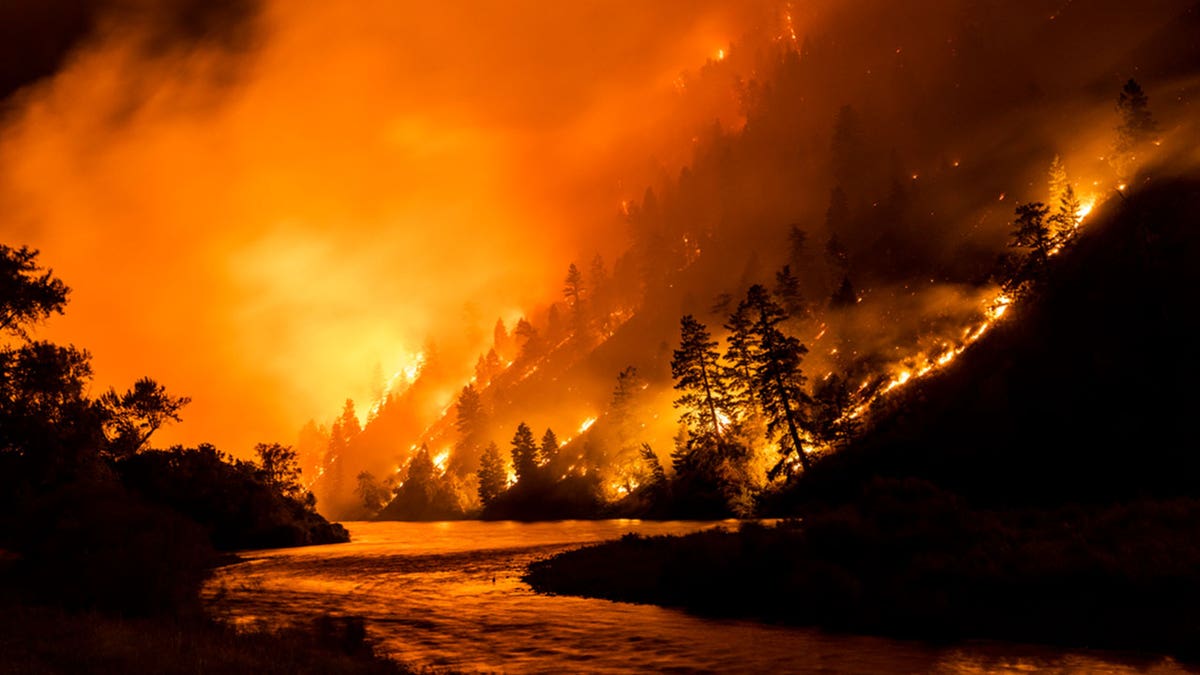Fox News Flash top headlines for September 29
Fox News Flash top headlines are here. Check out what's clicking on Foxnews.com.
Authorities are searching for whoever left an unextinguished campfire they say led to the largest wildfire in Idaho this year that has drawn hundreds of firefighters, three of whom died.
Wildfire officials said Wednesday that the 200-square-mile Moose Fire in east-central Idaho near the town of Salmon that started in mid-July is only about half contained.
The U.S. Forest Service said interviews by its special agents and law enforcement officers as well as forensic processing of where the fire originated identified an unattended campfire as the source.
PA MAN FACES LIFE IN PRISON IN ARSON THAT KILLED 3
The agency said the fire began in a dispersed camping area between the Salmon River Road and the main Salmon River, across from the Moose Creek drainage. It then spread from grass and shrubs to forests at higher elevations, officials said, eventually forcing the evacuations of residents near the town of Salmon.
The agency is asking the public's help in identifying anyone present at the camping area from the afternoon of July 16 to the morning of July 17.

Idaho’s 200-square-mile Moose Fire that started in mid-July began from an unextinguished campfire. (Lucas Jackson/Getty Images)
State and federal authorities in recent years have bolstered efforts to hold responsible careless campers, fireworks users and public lands target-shooters, seeking firefighting costs that can reach millions of dollars.
"The program has had to expand, of course, because we have more need because of human-caused negligent fires," said Jessica Gardetto, external affairs chief for the U.S. Bureau of Land Management at the Boise, Idaho-based National Interagency Fire Center.
She cited an increase in public land use during the COVID-19 pandemic, with recreationists possibly new to the outdoor experience and unfamiliar with safely using a fire in wildland areas.
Humans are the most common cause of wildfires in the U.S., according to the Fire Center, starting nearly 53,000 in 2021. Lightning accounted for about 6,300 wildfires that year. Final numbers aren't yet available this year.
MONTANA WILDFIRE SPREADS OVER 1K ACRES; PERSONNEL CAN'T SAFELY FIGHT ON GROUND
Idaho officials also track human-caused wildfires and aggressively seek those responsible. As of Tuesday, the Idaho Department of Lands, or IDL, reports that 123 of the 276 wildfires it's responsible for fighting on 10,000 square miles of state, federal and private land were human-caused.
"We investigate every fire under IDL protection," spokeswoman Sharla Arledge said. "We've had some good success, and there have been two arrests for arson this year."
Over the past two years, the agency has also bolstered its wildfire investigation capabilities by creating a new program that has a dedicated manager who can tap 20 workers who have completed specialized fire investigation training.
Finding those responsible for a wildfire is "important not only for people who own the property, but for taxpayers," Arledge said.
Residents who have lost homes in wildfires have also filed lawsuits against those found responsible to collect damages.
BOLT CREEK FIRE IN WASHINGTON FALLS TO 7% CONTAINMENT AS FIRE WEATHER ON THE RISE, OFFICIALS SAY
On the Moose Fire, Salmon-Challis National Forest officials said Thomas Hayes, 41, of Post Falls, Idaho, and Jared Bird, 36, of Anchorage, Alaska, died from injuries they sustained when their CH-47D Series "Chinook" crashed in the Salmon River on July 21.
Fire officials also reported that 48-year-old Gerardo Rincon, a crew boss with a 20-person hand crew from Independence, Oregon, who had 28 years of experience fighting wildland fires, died on Sept. 20 after experiencing a "medical emergency" early in the morning.
Hundreds of firefighters lined up on Saturday at the Lemhi County Airport south of the city of Salmon as Rincon's body was transported past them in a hearse to a waiting aircraft and then flown to Oregon.
About 500 firefighters and support personnel remain at the blaze that has an estimated containment date of Oct. 31, potentially meaning it will take an end-of-season rain or snow event to extinguish the fire.


